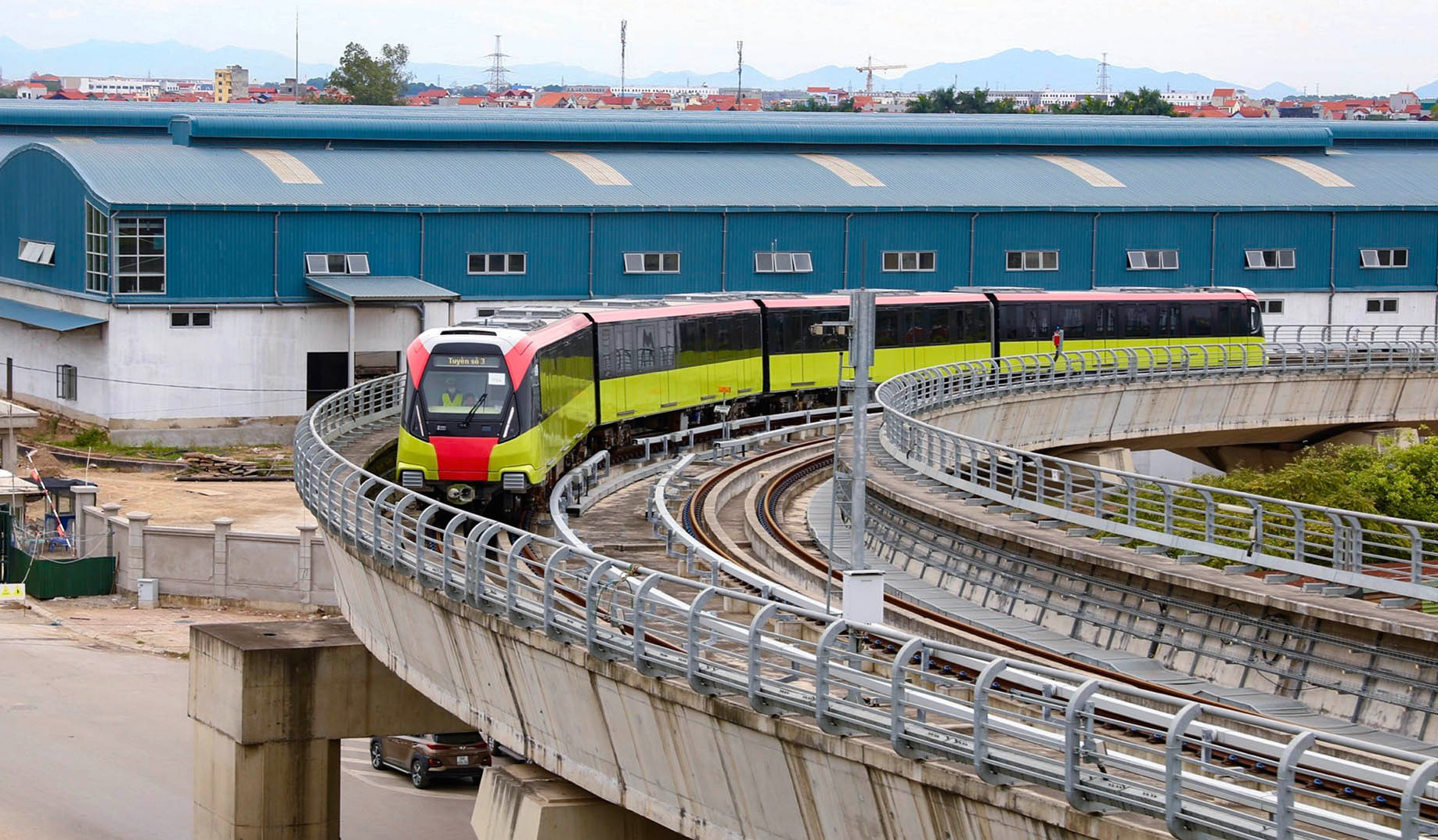
The Hanoi Department of Construction announced it is accelerating steps to meet the goal of developing 15 urban railway lines, totaling about 600km, by 2045.
The city is currently rushing to complete procedures to begin construction on two urban railway lines in 2025, inclulding Line 2, Nam Thang Long – Tran Hung Dao section, 11.5km long, and Line 5, Van Cao – Hoa Lac section, 38.43km long.
This is part of Hanoi People’s Committee Resolution No188 to develop urban railways in three phases.
From 2024 to 2030, the city aims to complete about 96.8km, including Lines 2, 3, and 5, while preparing investments for 301km of Lines 1, extended 2A to Xuan Mai, Lines 4, 6, 7, 8, and those connecting satellite cities. The total estimated capital for this phase is about $14.6 billion.
From 2031 to 2035, Hanoi will complete an additional 301km of urban railways, with an estimated capital of about $22.57 billion. Once completed, urban railways will handle 35-40 percent of public passenger transport.
From 2036 to 2045, the city will complete the remaining 200.7km supplemented under the Capital Master Plan and revised General Plan. The estimated capital for this phase is $18.25 billion.
Developing the urban railway system will not only ease Hanoi’s urban traffic pressure but also promote sustainable, modern, and connected urban development. Once completed, the urban railway network will serve as the backbone of the public transport system, driving development in both the inner city and satellite urban areas.
Dang Huy Dong, Director of the Institute for Planning and Development Research, stated that completing the urban railway system in just under 12 years is a daunting task.
It may not be feasible without integrating TOD (transit-oriented development) urban models along metro station routes. This requires exceptional management that goes beyond current investment and construction regulations.
According to Dong, without solutions for management mechanisms and funding, continued reliance on ODA loans will hinder Hanoi’s ability to complete its historic urban railway mission. To secure funding, TOD planning and auctions for real estate investment rights in these areas are essential.
Public transportation includes various types, but only urban railways can effectively address urban traffic issues in cities with populations of 5 million or more.
Hanoi will conduct a review of land ownership and usage along the corridors, project locations, and TOD planning areas of approved urban railway lines.
TOD area is developed around stations and stops of public transportation, focusing on creating living, working, and recreational spaces closely connected to these transport routes. The goal of TOD is to encourage the use of public transportation, reduce traffic congestion, and foster sustainable urban development.
VND17,509 billion railway complex
Hanoi People’s Committee has submitted a proposal to the Prime Minister regarding the location, scale, and boundaries of a railway industry complex project in southern Hanoi (in communes of Chuyen My and Ung Hoa, Hanoi, covering about 250 hectares).
Previously, Vietnam Railways Corporation proposed that competent authorities review and approve the investment policy for this project.
The proposed railway industry complex is a multifunctional facility, including a factory for manufacturing and assembling vehicles, equipment, and spare parts; a research center; a maintenance and repair center; infrastructure connections to the national railway; and supporting facilities.
The preliminary total investment for the railway industry complex is VND17,509 billion. Public investment will fund the railway line connecting to the national railway, technical infrastructure, an R&D center, and state-supported components.
State capital injected into enterprises will fund the assembly plant and related components, while inviting investors to participate and collaborate in business operations.
If approved by authorities, the railway industry complex project will be prepared for investment within one year and constructed within three years to complete Phase 1 by 2029.
According to Vietnam Railways Corporation, the complex aims to produce domestically and gradually localize hardware and software components for information, signaling, and power supply systems; and master operations and maintenance. And it will produce certain spare parts for high-speed railways. It will also involve technology transfer, equipment investment, and production of locomotives and carriages for national railways with speeds below 200 km/h, as well as purchasing designs and manufacturing for urban railways.
The project will also establish a functional area for major repairs of all railway vehicles and equipment, initially focusing on national and urban railways.
N. Huyen